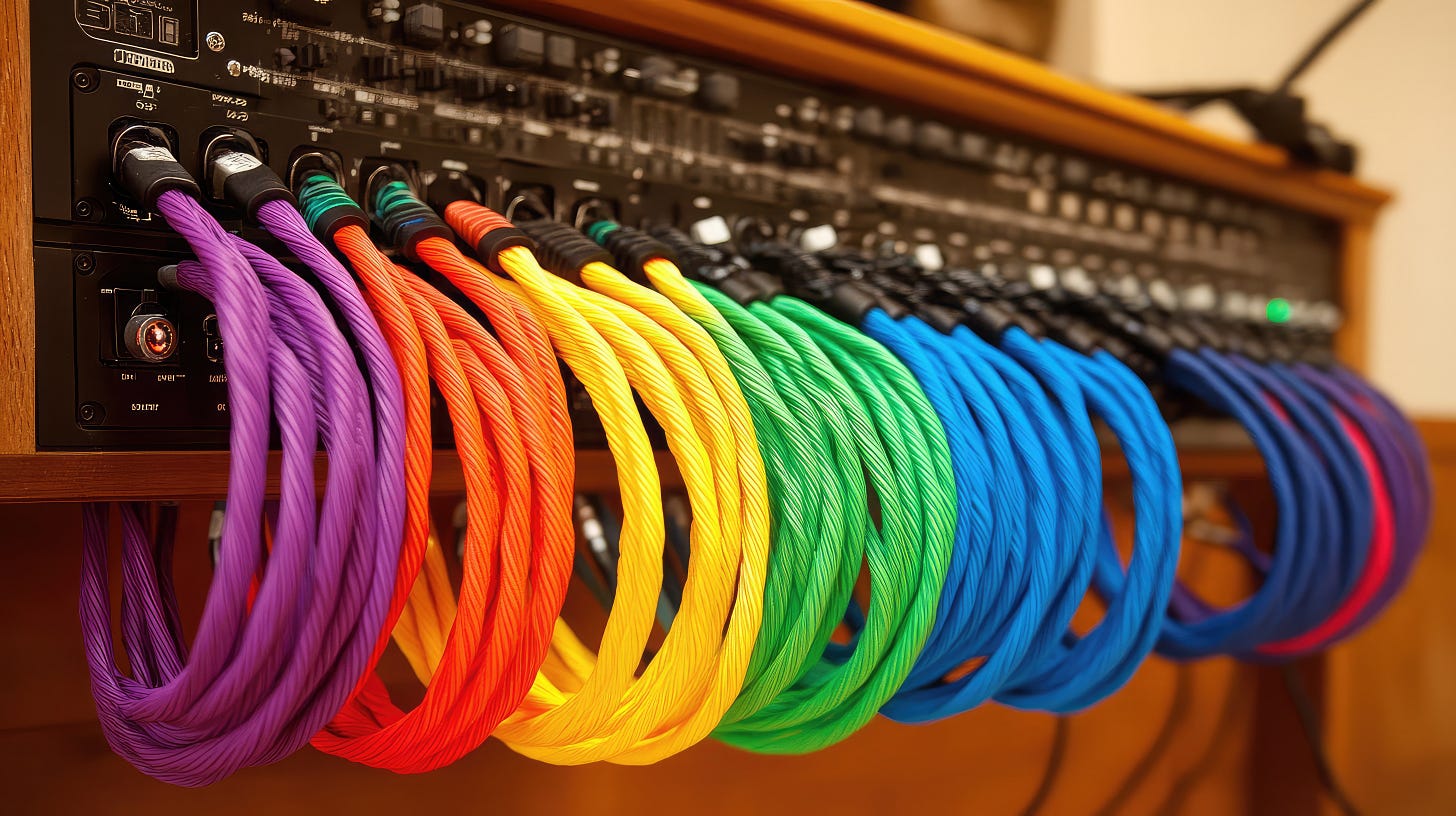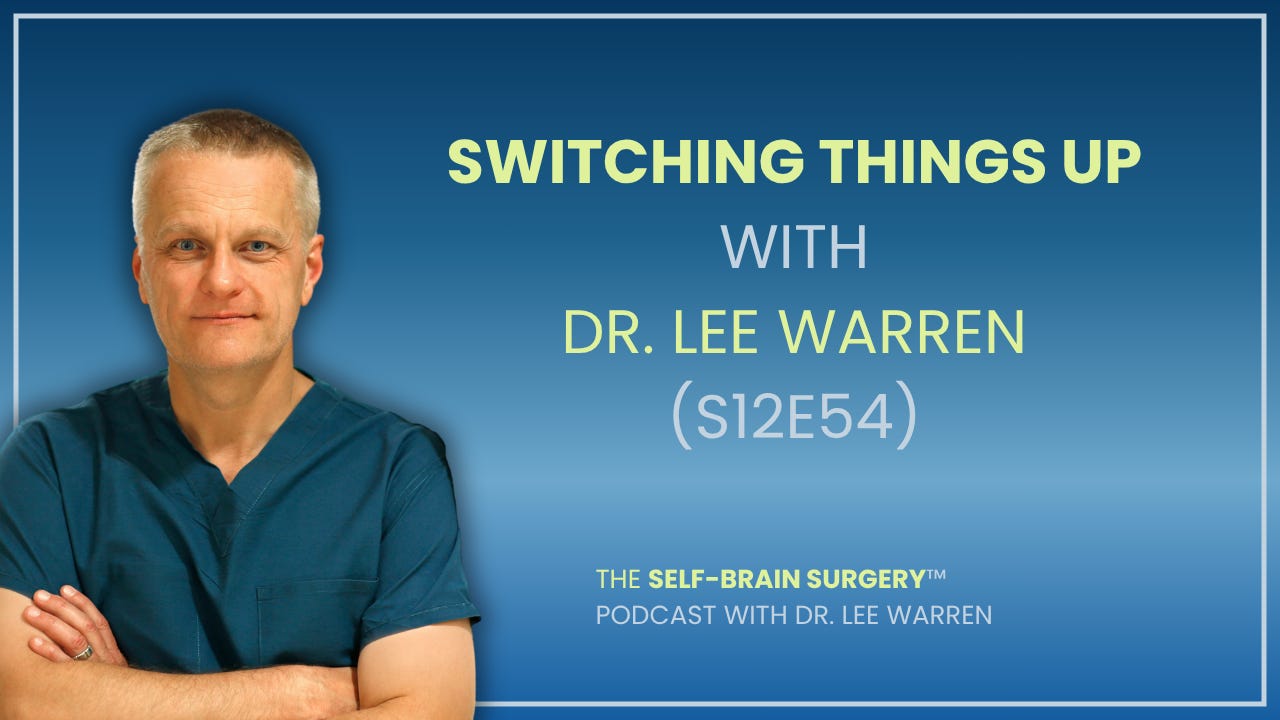The Neuroscientific Basis of Hope (even if you're sad, sick, stressed, or stuck)
Three Essential Tools Every Self-Brain Surgeon Needs, Part 3
[If you missed the first two parts of this series, be sure to check them out, as they will help you get the most out of this three-part series. Click here to read in the archive of all my posts!]
Most of us think of our brains as computers, wired to perform in certain ways
The prevailing teaching in neuroscience, and the message to the public from the news, teachers, social media, and most of therapy culture has given you a certain picture of your brain. You’re taught that you have a fancy computer in your skull that creates everything about you- including your personality, potential, and the possibilities for your life- and that brain is you.
And that’s all great, as long as the brain lottery gave you a good one, right?
Because that teaching (the “You are your brain” idea) implies that you have no control over how your brain came to be how it is or what its potential for change is if it’s not working well for you. If your brain was formed by the genes you inherited from your parents, and shaped by the environment in which you were raised, then it’s really just the luck of the draw if you’re smarter, more resilient, or more capable than someone with a less powerful brain, right?
But here’s the problem:
You’re living your life with the brain you have, with all its built-in reactions and tendencies and capabilities, and you’ve learned how to operate within those limitations.
And then it happens. You’re maxed out, running through life as best you can and suddenly The Massive Thing (TMT) comes out of nowhere. You were processing and coping and dealing with your family and your wins and losses and finances and fears, and the phone rings, like mine did on the night of August 20, 2013.
“Your son is dead.”
Lisa and I were busy. We owned our own practice. Our first granddaughter was due any day. We still had our youngest daughter living at home, who was a high school junior at the time. Every available outlet in the sockets into our brains, it felt like, was already occupied.
I was husband, father, almost Pop/Granddad, neurosurgeon, business owner… I was as plugged in as I could be and operating my life on the thinnest of margins. And now, I was a bunch of other things- devastated, grieving, broken, lost, angry, wondering where God was.
It was like I had another bunch of huge, power-draining things that demanded to be plugged into my life, and there just wasn’t enough room.
My brain felt fried, and my understanding of my capacity to recover, heal, grow, and live again was shaped by my training as an neuroscientist and my experience as a neurosurgeon who’d seen so many people hit their TMT and burn up like an outlet that’s been overloaded.
I had faith that God could make it better, but I’d lost hope that he would, because I didn’t think my brain or my heart could take any more.
My studio was a mess, until I discovered patchbays
I’ve told the story many times, in this letter, my books, and on the podcast. But what happened next after we lost Mitch led me on a now 12-year-long search for the answers to how people find their feet again after TMT shows up in their lives.
And, as God usually does, he showed it to me in the environment he’d placed me in: neuroscience.
I started writing, first to my family and then to you, and podcasting. These were my attempts to understand what we were feeling and dealing with, and to give all that pain some purpose. But once I got into podcasting, I had another mess on my hands.
My studio was a chaotic cacophony of cables and gear. I bought all the right microphones and hardware (back then it was much harder, because nowadays you can literally just use your phone), downloaded all the right software, and set up the room to allow me to try to communicate my thoughts with you. But whenever I needed to change something, I’d have to crawl behind the desk and swap cords and cables, in a never-ending quest to get it right.
I was overwhelmed with the technical issues, and it seriously hampered my ability to create and share the messages I thought would help people move forward, as I was so desperately trying to do.
I sent an email to my friend Bob Mondok, who works at a company called Sweetwater, where I’d purchased most of my studio equipment. I explained the situation, and Bob replied, “You just need a patchbay.”
He was right. The patchbay allowed me to plug everything into everything else, and make changes instantly without having to crawl under the desk anymore. I just simply move a cable from one spot to another, and it would reroute the signal wherever it best served the project I was working on.
Bob didn’t know it, but he didn’t just solve my studio problem; he also gave me the metaphor I needed to finally understand what was happening in my brain.
By then, as I explained in Hope Is the First Dose, I’d begun to realize the incredible power God has given us to literally change our brains by changing our thinking. I first saw this phenomenon- neuroplasticity- in action in the functional MRI scanner at Auburn University. That’s when Lisa and I felt hope for the first time since Mitch had died (I talked about that here). It was then that we started seeing neuroscience and scripture coming together (like how Philippians 4:6-8 teaches that anxiety always bows to gratitude, and neuroscience proves it), and I developed a new way of thinking about how people recover after TMT:
🧠 It’s possible to change your brain by changing your thinking.
🔌 You can unplug from one stream of thought (“I’m never going to get over this”) and plug into a new one (“There is still a lot of good in my life, and I can heal”), and your brain will respond.
🧠 You are not stuck with the brain you have, and you’re not simply the product of brain activity.
🧠 Your brain is changing all the time, and you can direct those changes just like I did in my studio.
I started writing and teaching from this renewed point of view, and I helped hundreds of thousands of people all over the world move forward again after they experienced their TMT.
But that’s not the end of the story, because the more I learned about how wrong traditional neuroscience was about how things really work between our minds and our brains, the more I realized that the patchbay concept was a great metaphor, but it wasn’t the real mechanism of hope I started seeing in the science of how God made our minds.
The truth is infinitely cooler, and way more hopeful
As I discussed on the podcast last Monday (see below), thinking of your brain as a patchbay, and your thoughts as being able to plug into different outlets and direct positive changes in your life is a helpful mental construct that can give you hope when you’re hurting. But what we know now is so much better.
When you change from one thought to another, you’re not just switching a cable from one jack to another. Your brain instantly begins to lay down new neural architecture, using tiny structures called microtubules to guide the neurons as the connect in new ways. It’s like you thinking, “I wish I had an outlet in this spot,” and then an outlet instantly appears in your wall with all the supporting wiring inside the wall.
You don’t need a brain transplant, you’re already performing one
I want you to take the time today to listen to last Monday’s podcast. You will learn how your mind creates your brain. You have an incredible ability to make your brain literally (not metaphorically) different, more efficient, more resilient, and more capable, in real time, by changing how you think.
And that, my friend, is the neuroscientific basis of hope.
It’s why I always say, “You can’t change your life until you change your mind.”
Self-brain surgery is not a metaphor. It’s the mechanism of how your mind creates your brain. No matter what your TMT. No matter how long you’ve been sad, sick, stressed, stuck, or settling for less, you can change. You are changing, in every second and with every thought.
It’s time you got serious about making those changes work for you and not against you.
🎧 We’ll take the next step on tomorrow’s Mind-Change Monday episode of the podcast— where I teach you a new operation called Getting AMP’d Up. We’re going to learn to overcome rumination and worst-case thinking by using the superpowers of anticipatory metacognition and selective attention, and it’s going to blow your mind (but in a good way).
📺 Paid subscribers—scroll down to watch it ad-free now.
For now, check out Switching Things Up to get started.
And remember my prescription for today:
“Self-brain surgery is not a metaphor, it’s the mechanism of how your mind creates your brain.”
👉 Subscribe to my newsletter, and I’ll send you my free Thought Biopsy Worksheet to help you start.
Already subscribed? Just email us at contact@drleewarren.com and we’ll send it your way.
📣Announcing: The Brain Surgeon and the Therapist 📣
On July 11, I’m recording the first in a series (hopefully) of podcasts with Gina Birkemeier, a brilliant therapist and author. Gina was on my podcast before, and we realized that it would be helpful to you to have us get together again and answer some of your questions. (🎩 Hat tip to Gina for the catchy title)
This is your chance to ask questions of Gina, me, or both of us, and we’ll build an episode (or possibly more if you like it). Here are three ways you can submit questions:
The most fun would be for YOU to join us on the podcast! You can record a video question using this link, and we’ll include you in the show! It’s super easy, and all you have to do is record. We’ll take care of the rest. Please start with your name and where you’re from, and then ask your question.
You can leave your question via voice mail, and we’ll use your voice on the show. SpeakPipe has a limit of 90 seconds for the messages.
You can email your questions to contact@drleewarren.com
Please remember: we cannot answer specific medical questions, and we cannot provide medical care or mental health care to you. Answering a question does not constitute a doctor-patient or therapist-patient relationship. If you want your question answered without using your name or voice, please email it to us instead.
👉Share this message with someone who needs to learn the life-changing power of self-brain surgery. If you share with three friends who subscribe, I’ll give you a month of access to my paid content for free!
Want more tools for rewiring your brain and renewing your mind?
🎙️ Subscribe to The Self-Brain Surgery with Dr. Lee Warren Podcast for weekly strategies to change your brain—and your life.
📖 Grab my book Hope Is the First Dose for a roadmap to recovery and transformation.
📘 And stay tuned for The Life-Changing Art of Self-Brain Surgery—coming February 2026!
The good news is, you can start today.
Let’s get after it. 🧠✝️
Lisa and I are praying for you.
Dum spiro spero (While I breathe, I hope),
Lee
Psalm 71:14 ("As for me, I will always have hope.")
From the banks of the North Platte river on Moon River Ranch in Nebraska, USA
Be sure to check out the archive of previous posts if you missed last week’s letter.
Keep reading with a 7-day free trial
Subscribe to Self-Brain Surgery™ with Dr. Lee Warren to keep reading this post and get 7 days of free access to the full post archives.








